While there might still be some people who don’t rely on the internet for work, these days, the possibilities for working without it are limited.
More than ever before, in 2021, collaborating with your colleagues is a process that is supported by a number of online collaboration tools.
What are Online Collaboration Tools?
An online collaboration tool is any software or web-based technology that uses the internet to facilitate teamwork and collaboration between team members.
Whether your business is based in a shared physical workspace, made up of remote teams, or you employ a hybrid work model, there are plenty of times when an online collaboration platform is the most efficient way to streamline your workflow.
Even for co-workers sitting at the same desk, the demands of the digital world mean that team collaboration tends to be done through these tools.
Benefits of Online Collaboration Tools
There are many advantages to using online collaboration tools versus traditional ways of collaborating.
For starters, these days organisations large and small are expected to have an online presence. When so much of your interaction with the public happens online, why should your internal goings-on be any different?
What’s more, using the internet for collaboration maximises the efficiency of your teamwork processes by ensuring that all your work is natively digital, saving on time and effort spent converting or uploading
The other major advantage of digitising your collaborative processes is that it facilitates greater opportunities for remote work. Whereas once team collaboration depended largely on being in the same physical location, with the latest online collaboration tools, we are witnessing the emergence of new, distributed work models for remote teams.
Must-Have Collaboration Tools in the New Decade
At the dawn of the twenties, some online communication tools have become so mainstream that it’s almost impossible to think about working life without them. Most of us are more likely to send an email than a letter. And thanks to Voice over Internet Protocol (VoIP) technology, even making a phone call is increasingly done online.
But useful as communication tools are, there’s more to collaborating than just exchanging words. Fully collaborative projects demand that we share files, our schedules, and even our screens. You can get lost in the innovative tools that have been developed to assist teamwork online.
To help you make sense of it all, we’ve divided up our list of the ten best online collaboration tools by functionality. Here’s our pick of the best tools for project management, data visualisation, note-taking, file-sharing, customer relationship management, and communication.
Documentation Tools
Some of the first applications of personal computers for business were the word processors of the sixties and seventies. To this day, compiling and editing digital documents—from contracts to blog posts—remains one of the most common and important things we use computers for.
Thanks to collaborative documentation tools that use the internet to allow multiple computers to access the same file, the whole process of writing, editing, and proofing documents has been massively streamlined. And while there are a number of tools that provide this functionality, there is one that has proved more popular than any other.
-
Google Docs
In the space of a few short years, Google Docs established itself as the standard for collaborative document production.
It is now trusted by millions of people to not only share and review documents but to make changes and suggestions that your team members can see in real-time. Docs not only tracks edits but allows users to leave comments explaining decisions to co-authors and editors.

And because documents are stored on the cloud, including a full version history that allows you to restore documents to a previous state, there’s no risk of losing work due to hardware failures or forgetting to save.
It’s no wonder that Google Docs has become an important team collaboration tool for writing and editing online. Not only does it integrate seamlessly with the Google ecosystem of Gmail, Chrome, and Drive, thanks to Google’s open-ended philosophy, it is fully compatible with Microsoft Word’s .doc file format.
Project Management Tools
In the past, project management tools included physical work breakdown trees and Gantt charts that were often filled out by hand.
In the modern discipline of project management, which includes both task management and performance management, these graphical ways of displaying a project’s schedule and organisation are still important, but have evolved a long way.
For project managers, real-time communication tools like instant messaging and team group chats have advanced a more dynamic approach to project management that makes remote collaboration easier. Even better, dedicated project management software has been developed that assists in scheduling, oversight, and the division of labour.
We think that project management tools are so important for team collaboration that we’ve included two in our list: Trello and Asana.
2. Trello
If you’re new to Kanban board-style task management software, then Trello is a great place to start. As with many of the new online project management tools, it carries the agile, drag and drop nature of organising your projects on a whiteboard forward to the digital medium, with all its advantages of efficiency and automation.
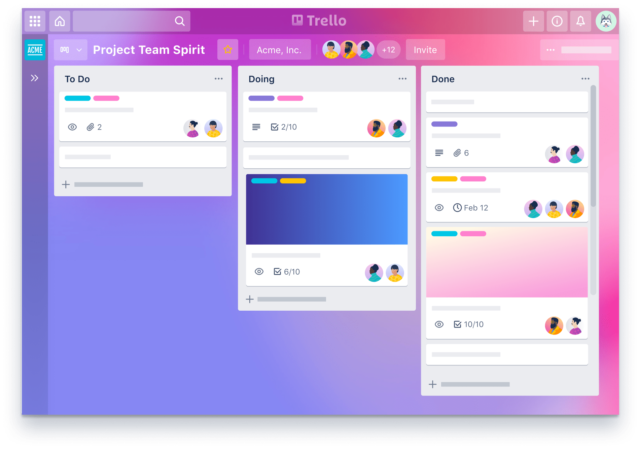
Perhaps Trello’s best feature is that thanks to the hundreds of “power-ups” it makes available, it can be integrated with many popular collaboration platforms, including most on this list. No matter what digital tools you use, Trello is customisable enough to fit seamlessly into your collaborative workflow.
Having a simple and intuitive interface, Trello makes checking in on the status of the various activities that make up a project easy. For project managers looking to collaborate with co-workers carrying out a diverse array of tasks, it really is one of the best online collaboration tools you can use for free.
That’s right—for free! The free version of Trello has all the functionality you might expect to be reserved for paying subscribers, including up to ten project boards and use of the mobile app. And if you do want the extra features that come with their “business class” package, the pricing is competitive.
3. Asana
If Trello, with its streamlined interface and user-friendly design, has set the bar for project management software, when it comes to managing complex projects, Asana has long been a favourite
Incorporating many of the same features that make Trello such a powerful online collaboration tool, Asana offers Kanban board-style project management alongside several other customisable templates.
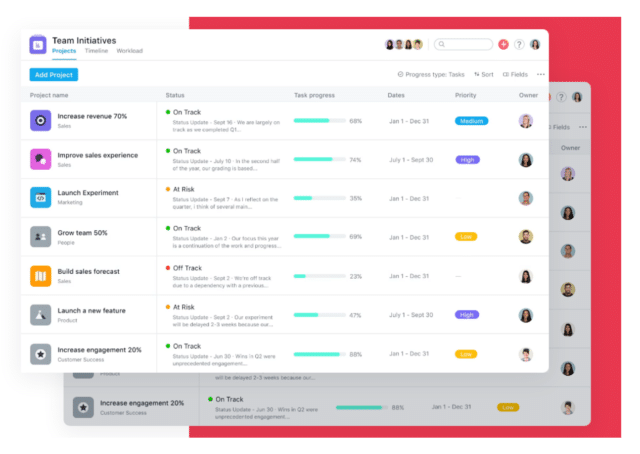
What is especially clever is that Asana also integrates task management automation with an intelligent system of “Rules” that can be programmed to automate routine tasks
It can also be connected to the time tracking platform, TrackingTime, and set up so that the software automates the creation of timesheets for project budgeting, client billing, invoicing, and payrolls, etc.
While Asana is also available as a free version, you do have to pay to make use of some of its smartest features. It is best suited to projects like agile software development that require a dynamic workflow and real-time adaptability. It even rivals dedicated issue tracking software like Jira, used by developers for project management and version control.
Data Visualisation Tools
Whether collaboration takes place in-person or by video conferencing, tools that help us to visualise key data sharpen our ability to communicate effectively.
The world of data visualisation is made up of many customised software products to suit every need. For everyday collaboration, there are a number of user-friendly online tools available that can help you to represent datasets visually.
4. Chart Blocks
One of the best all-round data visualisation tools is Chart Blocks, which allows you to plot manually entered data or imported CSV or Excel files.
Chart Blocks provides a number of chart and graph styles. It allows you to customise graphs’ axes, legend, annotation, images, shapes, etc., and create a public link for the graph which you can easily share on social media.
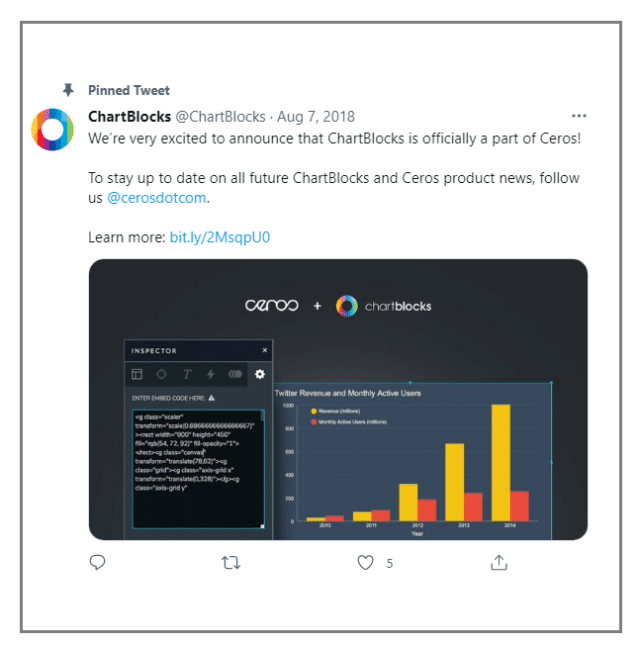
As with many free and open-source graphic plotters, there are some handy repositories on GitHub that greatly extend its usefulness as collaboration software.
Note-Taking Tools
Do you still take down notes with a biro and pad during meetings? There’s nothing wrong with that if you do. But when we increasingly collaborate over video meetings and use our computers for everything from screen-sharing our presentations to Googling answers to questions in real-time, why not also use them to keep your notes in order?
5. Evernote
When multiple stakeholders with different perspectives come together to collaborate, a powerful digital notebook like Evernote can be indispensable.
With the ability to scan documents, save webpages, and organise it all from your PC, Mac, or mobile device using the IOS or Android app, Evernote is handy when it comes to compiling impressive multimedia notes, keeping minutes, and brainstorming with your team.
Fully integrable with Google Workspace (formerly, G Suite) and several other popular messaging platforms, such as Slack and Microsoft Teams, Evernote has become the gold standard for modern note-taking software.
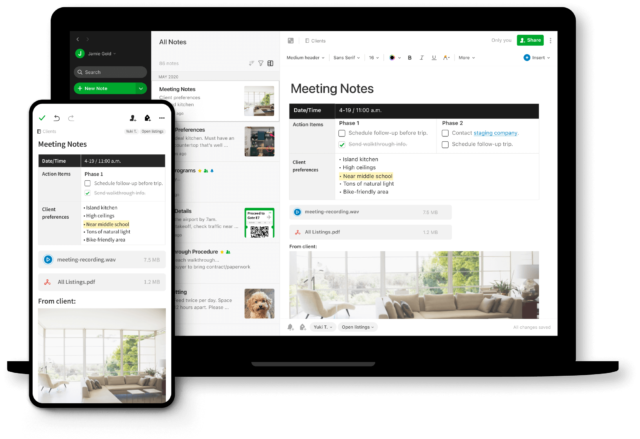
To help facilitate team collaboration, Evernote has developed Spaces, a shared workspace where co-workers can pool and review each other’s notes. Without having to rely on instant messaging, Spaces allows the easy sharing of ideas between team members.
For maximum productivity, Evernote can be synced with task manager tools like Basecamp so that checklists written as notes can quickly be transformed into implementable to-do lists on your task manager.
File-Sharing Tools
Of course, besides notes and text documents, there are countless other types of files that might need to be shared between a team during the course of a typical collaborative project.
As well as being cumbersome, emailing files isn’t an option for larger files. Gmail has a 25 Mb limit on attachment size and Outlook’s is capped at only 10 Mb. And while physically transferring files on a drive is always an option, thankfully there are many online tools available that save us the hassle.
6. Google Drive
Google Drive is a widely used file-sharing and cloud storage solution made popular because of its compatibility with the full suite of Google tools. For example, if you try to attach a file over 25 Mb using Gmail, you will automatically be asked if you would like to transfer the file using Google Drive instead.
If you’re using Google Docs as a documentation tool, then you’re already using Google Drive, which encompasses Google Docs, Google Sheets, and Google Slides.
This set of online collaboration tools are known as the Google Docs Editors office suite, which together allow collaborative editing of documents, spreadsheets, presentations, drawings, forms, and more. Files created and edited through the Google Docs suite are saved in Google Drive.

Google Drive offers users 15 GB of free storage through Google One. Google One also offers 100 GB, 200 GB, 2 TB, 10 TB, 20 TB, and 30 TB, through optional payment plans. Files uploaded can be up to 5 terabytes in size.
Users can change privacy settings for individual files and folders, including enabling sharing with other users or making content public.
7. DropBox
When it comes to sharing files, many people choose to opt for an alternative to Google Drive, like Dropbox. Similar to Google’s offering, Dropbox provides an online file sharing and cloud storage service that can be integrated with many other programs and platforms, such as Microsoft Office.
Dropbox Business users can also use integrated PDF viewing and sharing with Adobe, and real-time messaging through Slack.
While Google Drive’s syncing supports multiple devices and operating systems, such as Microsoft Windows, Mac OS, Android, and iOS, it doesn’t include native Linux support.
You may be able to hunt out some workarounds on GitHub, but file syncing with Linux is not a feature Google provides. As Drive doesn’t support syncing of file changes, it needs to re-upload or download entire files to sync them.
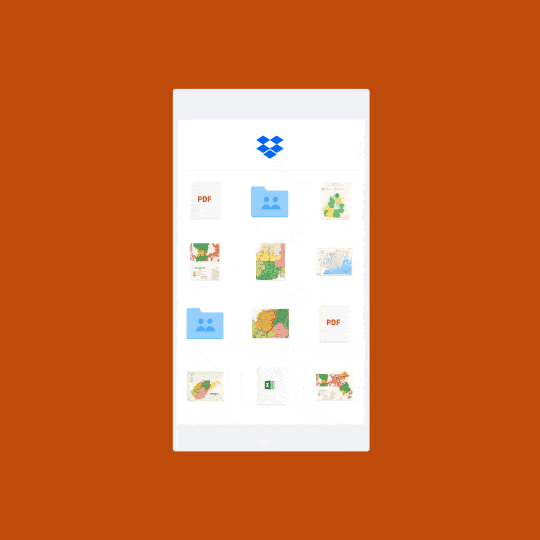
-spectrum online work management and collaboration software tool, it has proven to be effective as a solution for CRM.
Thanks to its dedicated sales and CRM template, Monday provides a system that can be easily aligned with the requirements of other departments.
Using different configurations of the same system is especially useful for collaboration among different teams, whose individual demands fDropbox, on the other hand, can sync files across multiple devices and operating systems, including all primary desktop and mobile platforms. Its Linux support and “smart-sync” set Dropbox apart from Google Drive, as it means only changes are synchronised, not the entire file or folder.
Dropbox is integrable with a wide range of external products, but may not feel as seamless when used with other Workspace tools as Google Drive.
CRM Tools
Customer Relationship Management, or CRM, platforms have become one of the cornerstones of business practice in the digital era. CRM software packages like Salesforce, which provide a toolkit of useful features for sales, marketing, and customer support teams, have become a familiar sight in many businesses.
When it comes to optimising the performance of teams, the right CRM tool can make all the difference.
8. Monday CRM
Monday.com offers one of the most customisable, and user-friendly web-based CRM platforms available, making it a powerful online collaboration tool for remote teams, even those working across different time zones.
Although Monday is really a fullrom a tool might differ, but who will still benefit from a unified approach.
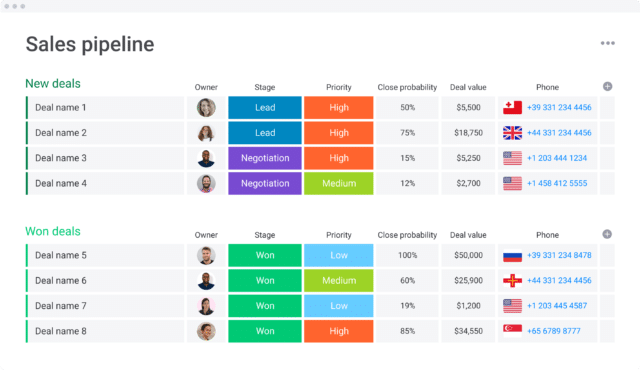
Because it allows you to customise the interface using ready-made templates, Monday helps you tailor any sales pipeline, workflow, and process you need to drive real business impact. Its visual interface allows you to streamline your entire sales process and coordinate between team members operating at different stages of the customer journey.
Communication Tools
There can be no collaboration without communication. In a certain sense, all online collaboration tools are a type of online communication tool. But there are obviously some technologies that are designed specifically for in-team conversation, like group chat and video conferencing software.
9. Gmail
It might seem like stating the obvious to say that email is one of the most important tools for helping teams to collaborate. That’s because it has become so ubiquitous that we take it for granted.
In the age of instant messaging and smartphones, where platforms like Zoom and Skype mean we can make video calls at the touch of a button, why exactly is it that email remains so popular?

Part of the answer lies in its institutionalisation—the way it has become an omnipresent and unavoidable part of most people’s private and professional lives. There are few companies in the world that would better qualify as an institution than Google, and besides the search engine, Gmail is one of their most popular products.
With over 1.8 billion users, Gmail is the largest email service provider in the world. Partly that’s because even before they introduced a webmail service, Google was already a household name.
Gmail has also proven to be immensely popular thanks to its ease of use, its integrability with both other Google products and third-party applications, and its central place in the Google ecosystem.
10. RingCentral
If you’re looking for a comprehensive digital communication tool that suits the needs of all sorts of teams, collaborating on diverse projects, then RingCentral is the solution for you.
RingCentral App features
Using the RingCentral app, either from a computer or mobile device, gives you access to a host of useful features.
Providing video calls, video conferencing, audio-only VoIP services, screen sharing, and instant messaging, RingCentral is the most comprehensive online communication platform out there.
Rather than having to bounce between one app for messaging, one for phone calls, and one for video chat, RingCentral makes all these functions accessible from a single, easy-to-access interface.
It even incorporates file sharing in-app, meaning that teams using RingCentral don’t find themselves wasting time leaving the app to send materials to one another.
What the best products in this list all have in common is their ability to integrate with other popular tools. In this respect, RingCentral excels, being fully compatible with Gmail, Microsoft Teams, Salesforce, and more.
What Kind of Teams Can Benefit From RingCentral?
With its intuitive design and great range of features, RingCentral has proven popular with teams from diverse industries and backgrounds.
Whether you’re discussing the key objectives of new features, sharing code snippets, or quickly jumping on a video call, RingCentral’s all-in-one solution gives developers a virtual workspace for all their communications requirements.
You can set dedicated discussion threads for different projects and topics so that conversation remains on track and co-workers aren’t constantly distracted by messages that aren’t relevant to them.
Finally, being able to exchange a variety of media files on the same platform that you use for messaging and video conferencing helps to streamline your communications and avoid the mess that can stem from using a variety of different applications.
Because it incorporates file sharing, file storage, instant messaging, and task management capacities, alongside its telephone and video call features, RingCentral offers great value for money because you only need to purchase a single subscription to access it all.
For startups, having all that functionality in a single package can be a great way to streamline spending.
What’s more, being a cloud-based technology, it allows you and your teams to be more agile and more mobile. This makes it a far better option for remote workers and the globally distributed teams that many startups prefer. For the same reasons, adopting a cloud solution makes it easier to scale up when the time comes.

In 2021, contact centres increasingly offer an omnichannel approach to communications that provides customer service via phone, video, or live chat. Because RingCentral supports all these media, it is a great option for both outsourced and in-house customer service.
One thing about RingCentral that support teams love is the ability to get real-time help from other agents within the team. This means your staff can resolve tricky customer issues quickly, and customers spend less time on hold as they can be efficiently diverted to the most appropriate agent.
Thanks to the fact that it seamlessly integrates with Zendesk, support staff can also monitor tickets efficiently and use a single platform for all their customer support needs.
Lastly, RingCentral offers unlimited video calls so customer service teams can deliver a personalised, human element to your customer journey.
The field of HR is one that has always valued good communication. Thanks to the range of options for communicating that RingCentral offers, HR professionals can customise their approach to suit the different needs of their job.
Keeping everything in one place is especially useful when your job requires contact with large amounts of people. This is the case with HR teams who will often be communicating with hundreds of staff at a time through multiple channels.
RingCentral is designed to be a versatile tool for all business departments including your design team.
Whether it’s brainstorming in video meetings, instantly messaging collaborators with questions, or sharing and storing sketches, mockups, and prototypes in a way that makes version control easy, RingCentral’s unified platform has everything designers might need all under one roof.
For Marketing Teams
When it comes to marketing, collaborators need to be able to communicate quickly and efficiently. As a multi-purpose tool that includes task management capabilities, RingCentral is especially useful for marketers who often need to juggle multiple projects at once.
RingCentral’s mobile app is also a valuable asset in a job that often requires practitioners to be on the move. Offering a streamlined version of the full software, the RingCentral mobile app packs the same great features into a mobile device.
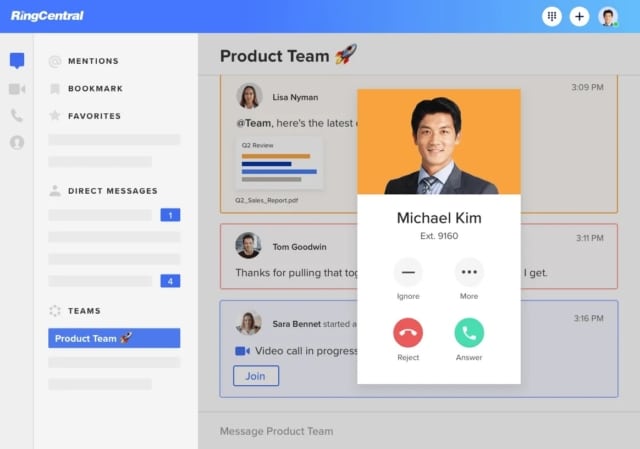
For Finance and Accounting Teams
In the average business, few departments carry the weight of responsibility more than the accounting and finance team. After all, it’s thanks to them that everyone else gets paid.
RingCentral’s task management feature means you can assign your tasks, set deadlines, and check assignments off the list all from within your chat threads. This is a great feature for teams that need to stick to strict deadlines in order for a business to function smoothly
For Sales Teams
For sales teams, RingCentral is the perfect tool for managing your outgoing and incoming calls, making sure that every lead is followed and no opportunity to make a sale is passed up.
Because RingCentral users can make and receive phone calls with their business phone number and identity, no matter where they are or what device they’re using, your sales team can feel safe knowing that their privacy is not at risk when making and receiving calls.
For Recruitment Teams
Modern recruiters will often have to be in touch with hundreds of applicants, and may even carry out group interviews via video conference.
RingCentral’s free video meeting module, RingCentral Video Pro makes these kinds of conferences cheap and easy to carry out. It allows conferences with up to 100 participants and meetings up to 24 hours long. The app also includes ten hours of storage for recorded meetings, which you can save for up to a week for downloading and sharing—across every device.

For IT Teams
Unsurprisingly, IT departments appreciate a communication tool that provides cutting-edge technology.
RingCentral’s HD video chat and instant messaging are just the types of features that IT teams demand from their collaboration tools.
Originally published Jul 21, 2021, updated Aug 17, 2021
Better collaboration starts here
Get going in minutes, then invite your whole team.

